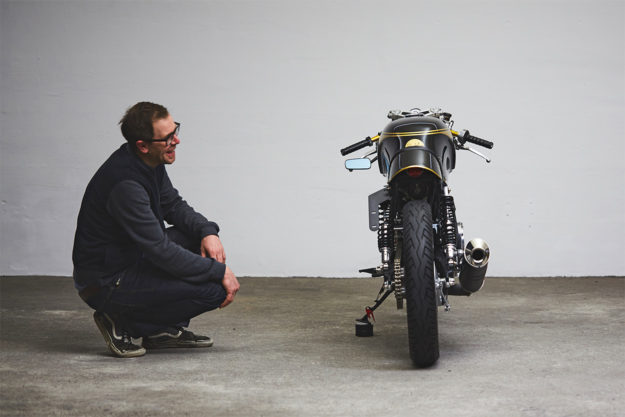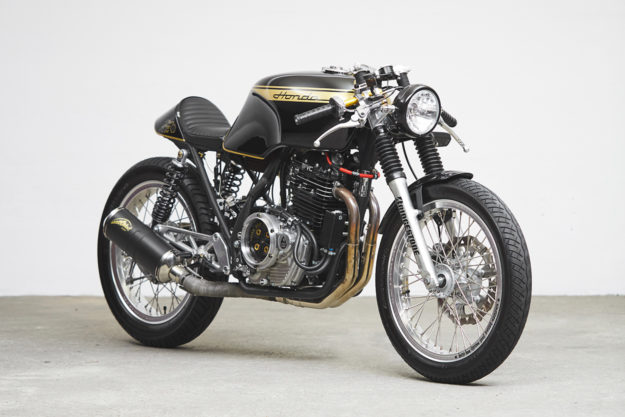
I remember the first time I clapped eyes on a Honda GB500 TT, about ten years ago. It was a pristine mid-80s model with a black tank, parked outside a garage in the Northern Beaches of Sydney, Australia. I had absolutely no idea what it was, but was instantly smitten.
German designer Oliver Aschenbrenner had a similar experience, also ten years ago. As a student, he spotted this 1990 GB500 at his local Honda dealer and fell in love. “I said, ‘I’m absolutely broke, but I need to have that thing!”
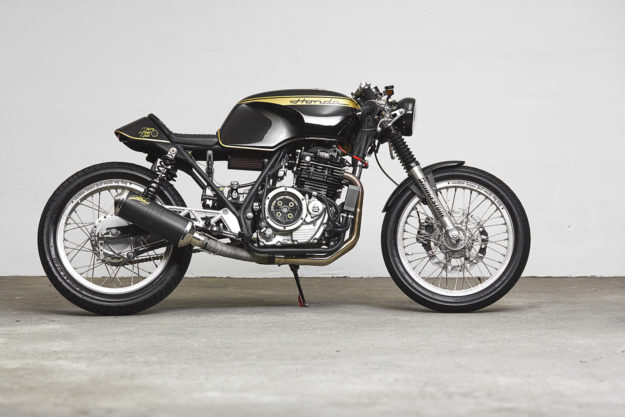
Oliver handed over a small pile of cash as a deposit, and promised to return in six months. The deal was done, and he returned in the middle of winter to pick up the bike. It wouldn’t start, so he pushed it home.
Over the years, he fixed all the maintenance issues, and installed a Mikuni TM40 carb and an exhaust system from SR-Racing. It gave the SOHC radial four-valve engine a little extra pep—enough to take Oliver all over Italy, France and Spain.
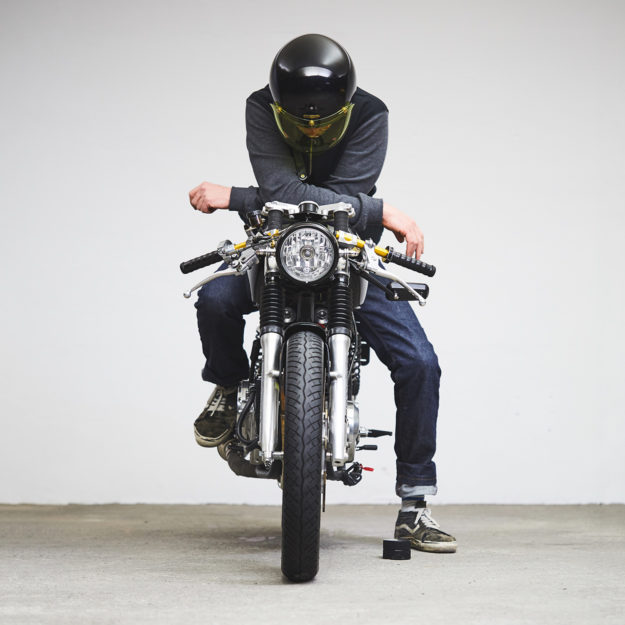
After a few years the trusty GB500 was looking the worse for wear. By now Oliver was a motorcycle designer, so he decided to tear it down and customize it. A stint working for Triumph Motorcycles in England mothballed the project—but Oliver has now returned to Bavaria, set up his own company 271 Design, and finished the Honda.
“Perfect lines, volumes and proportions are important to me as a designer,” says Oliver. “The original tank and frame were the foundation. My early training was in the field of building aircraft, so I also have a strong inclination towards technology. I wanted to build the strongest, most durable Honda RVFC engine too!”
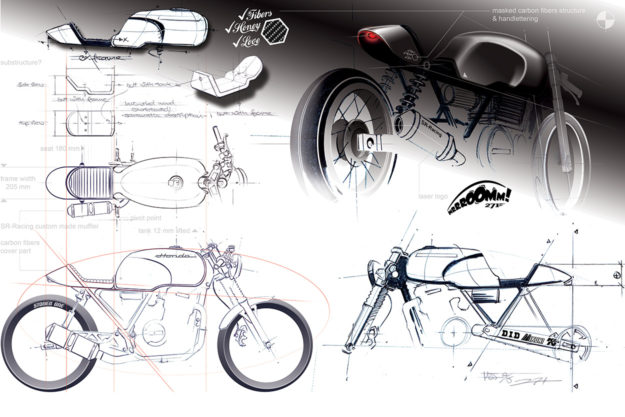
The hunched GB500 tank is now the focus on this cafe racer, subtly repositioned to get a level ‘shoulder line’ and hiding a new electrical system and Motogadget m.unit control box underneath. Oliver has also stripped the frame to the bare essentials, powder coated it, and shortened the rear end, using CAD for the design. He even took on the mold construction and carbon laminating himself: “Everything had to be minimal, small and of the highest quality,” he says.
The suspension was relatively simple in comparison: Showa forks from a Honda CB450S, shortened slightly and fitted with Wilbers progressive springs, and Ikon shocks at the rear.

Things started to get trickier when it came to the engine. “After months of tedious research and many discussions with RFVC specialists, I knew what I had to change,” says Oliver. “The catch was cost and time.”
“In economic terms, increasing the performance of these motors is complete nonsense. Getting a made-to-measure piston, connecting rod and crankshaft strained my finances. There was also a very long waiting period, and for a while I was afraid to carry on with the project.”
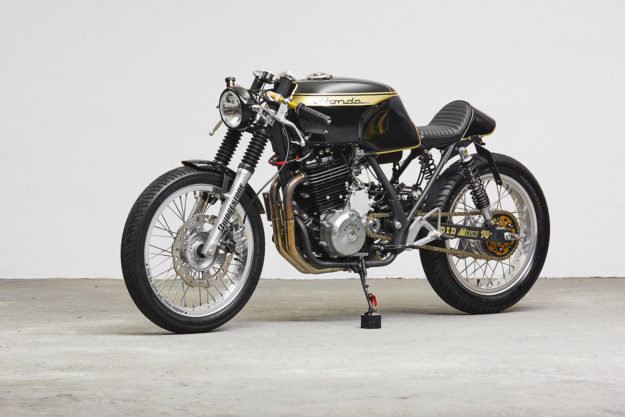
Oliver decided to bite the bullet and go ahead, but to keep costs manageable, he’s kept the original 498 cc capacity and the cylinder head. The transmission remains intact too, but everything else has been completely rebuilt or repaired using genuine Honda OEM parts
Although the cylinder head is original, a crack between the plughole and the left outlet valve required expert attention. Oliver entrusted this job to Ralf Welzmüller from ABP Racing, who reworked the entire head.
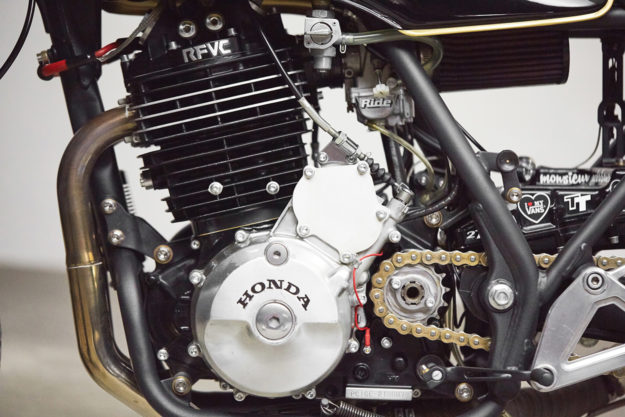
It involved cutting, welding, and rebuilding the combustion chamber, plus drilling a new spark plug hole and fitting new valve seats. As a precaution, ABP also replaced the original M8 cylinder head bolts with wider M10 bolts, to keep the head tight at high pressures.
“The result is a 100% reliable head for the bike, and a calm conscience for me,” says Oliver. “The head was worked on according to all the rules of the art, and it was bliss holding it in my hands.”

A new clutch cover was required, but a simple OEM part wasn’t enough. With help from Alexander Winkler of Cafe Racer South Germany, Oliver figured out a design that allows him to change the clutch without taking the entire housing apart.
Erich Eberle of Drema GmbH turned, milled and welded to perfection a new cover using Oliver’s CAD design, and it was a millimeter-perfect fit. “It’s like playing with Lego,” says Oliver. “A lifeless heap of metal slots back in, step by step. I love the anticipation.”

The heavily revised engine now has 2,000 kilometers on the clock, and thanks to the mods and the hot cam, it’s performing even better than expected. Kicking the GB500 into life is not so easy though, and the electric starter has been ditched: “The little Honda has become a man’s motorcycle!”
The paint is has been expertly applied by the legendary Christian Rupcic of Chiko’s Pinstriping. The honeyed gold striping matches the touches of gold on the clip-on bars and rear sprocket.
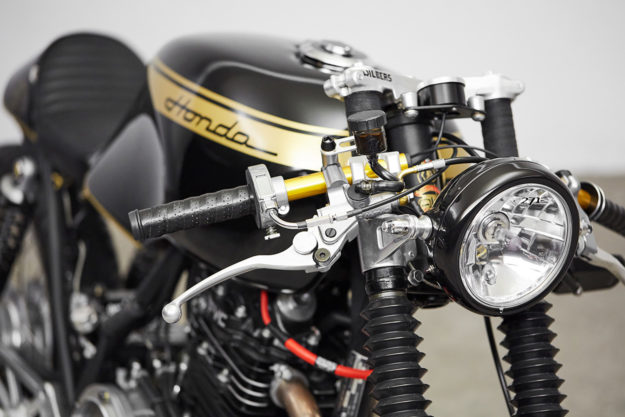
The GB500 looks close to perfektion to us. But like most designers, Oliver is never satisfied. He’s now toying with the idea of a custom frame, a major fork upgrade with double discs, and a minimal bikini fairing…
271 Design | Facebook | Instagram | Images © 2017 Philipp Wulk.
